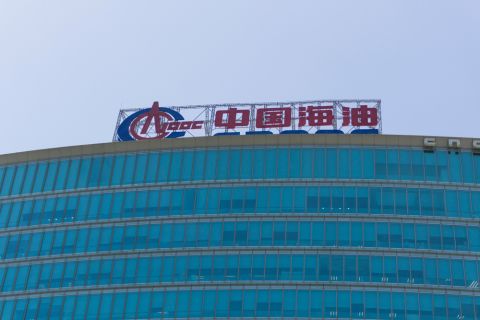Sandstone, limestone, and other hard, abrasive formations are being drilled more effectively with diamond-impregnated bits designed specifically for the application. In these challenging formations, materials, manufacturing, and design flexibility are resulting in bits with significantly longer runs and higher ROP.
In Bolivia, a custom-designed Varel 6-in. IMax bit recently set new performance records in both footage and ROP. The bit drilled 430 m (1,410 ft) in a single run, increasing footage drilled by 120% compared to the previous best 6-in. run. An average ROP of 2.43 m/hr (8 ft/hr) was 30% faster than the ROP of the next longest run.
The single-run performance exceeded all previous 6-in. bit runs in Bolivia to establish new footage and ROP records and the lowest cost per foot. When the bit was pulled due to MWD hours it was dull-graded 2-2-WT-A-X-I-BT-DTF and could be run again.
The performance was achieved by customizing the diamond-impregnated bit for turbine drilling in the formation’s sandstone and naturally fractured quartz. Maximum durability and performance in the high compressive-strength formation was addressed using a 12-blade matrix body with diamond-impregnated blocks on each blade and Vulcan thermo/abrasion resistant polycrystalline diamond compact (PDC) cutters in the bit center. Turbine and formation extremes resulted in a design that optimized impregnated segment block geometry to maximize bit durability without impacting efficiency. Design features also were modified to change hydraulics for maximum cutterface cooling and cleaning.
Similar improvements in performance are being recorded in a variety of hard, abrasive formations around the world. Drilling in British Columbia, Canada, an 8½-in. customized diamond-impregnated bit made 186 m (472 ft) of hole in 115.5 hours – further than the next best offset run and nearly double the footage of the average offset. ROP was 13% faster than average offsets in the sandstone and siltstone of the Artex and Doig formations. When the bit was pulled for a bottomhole assembly (BHA) change, the wear was so low that it could have continued drilling.
A lateral section drilled in the hard limestone, sand, and chert of Oklahoma’s Mississippian formation reached 682 m (2,238 ft) at 13.65 m/hr (44.78 ft/hr). The performance of the 6?-in. bit exceeded the combined footage of the bits run above and below it and surpassed the typical 201 m to 213 m (660 ft to 700 ft). The overall ROP was 71% faster than the most direct offsets.
In Oman, a 5?-in. bit drilled 249 m (817 ft) through an abrasive mixture of sandstone, siltstone, shale, silicilyte, and limestone in the Mushwar field. The footage is as much as seven times the interval drilled by similar bits in the same well and three times the ROP.
Algeria’s abrasive Silurian-Gedinian sandstone was drilled with a 6-in. bit achieving 309 m (785 ft), which exceeded the previous best offset performance with 7% more footage and 8% faster ROP. The dull condition was much better than average with very even wear across the face.
This scope of performance enhancement is being achieved with an engineered process of design, materials selection, and manufacturing that matches bit characteristics to formation specifics.
Tailored technology
The IMax diamond-impregnated bit design has a cutting structure of cylindrical, hot isostatic-pressed (HIP) segments tailored to specific formation characteristics. In less consolidated sandstones and when drilling from a softer to harder formation, PDC cutters can be placed on the face of the HIP segments to increase formation shearing. As the PDC cutters are worn, the underlying HIP cutting structure is exposed to the rock.
A key aspect of the design is strict diamond selection so that similar size and quality diamonds are used in each area of the bit. The diamonds are pelletized to improve diamond distribution within the matrix material. This prevents diamond aggregates and reduces areas of low diamond concentration so that stone distribution is very uniform, which results in a more consistent wear pattern during the bit run.
The HIP segments that form the bit’s cutting elements are sintered to achieve uniform stone distribution. The finished segments are set in the bit blades in patterns determined by the proprietary SPOT bit design program. The program is a collaborative tool that uses algorithms, field operating and performance data, and rock analytics to create formation-specific bit designs.
In conjunction with a proprietary GeoScience rock mechanics analysis program, the bit design program allows engineers to determine how changes in bit features and dimensions will affect such factors as steerability and bit walk, dogleg severity capability, and vibration control for any well trajectory and BHA.
During the manufacturing process, wear characteristics and durability are enhanced using a proprietary controlled-atmosphere infiltration process. Applied to the entire bit, the low-temperature controlled environment reduces oxidation and graphitization.
Regrinding and recirculating drilled cuttings is a common occurrence in hard and abrasive drilling applications. Extensive computational fluid dynamics (CFD) evaluations are used to configure bit hydraulics that eliminate regrinding. The CFD process identifies and eliminates possible stagnation zones for better cleaning efficiency, cutter cooling, and ROP. The high segment standoff also improves fluid flow.
Tough rock solutions
By designing the bit for the application, new levels of performance are achieved in drilling hard and abrasive formations. Advances in materials, manufacturing, and design are enabling a custom approach that is significantly improving ROP and footage drilled in tough rock around the world.
Recommended Reading
Sangomar FPSO Arrives Offshore Senegal
2024-02-13 - Woodside’s Sangomar Field on track to start production in mid-2024.
NAPE: Chevron’s Chris Powers Talks Traditional Oil, Gas Role in CCUS
2024-02-12 - Policy, innovation and partnership are among the areas needed to help grow the emerging CCUS sector, a Chevron executive said.
CNOOC Makes 100 MMton Oilfield Discovery in Bohai Sea
2024-03-18 - CNOOC said the Qinhuangdao 27-3 oilfield has been tested to produce approximately 742 bbl/d of oil from a single well.
TPH: Lower 48 to Shed Rigs Through 3Q Before Gas Plays Rebound
2024-03-13 - TPH&Co. analysis shows the Permian Basin will lose rigs near term, but as activity in gassy plays ticks up later this year, the Permian may be headed towards muted activity into 2025.
Proven Volumes at Aramco’s Jafurah Field Jump on New Booking Approach
2024-02-27 - Aramco’s addition of 15 Tcf of gas and 2 Bbbl of condensate brings Jafurah’s proven reserves up to 229 Tcf of gas and 75 Bbbl of condensate.





